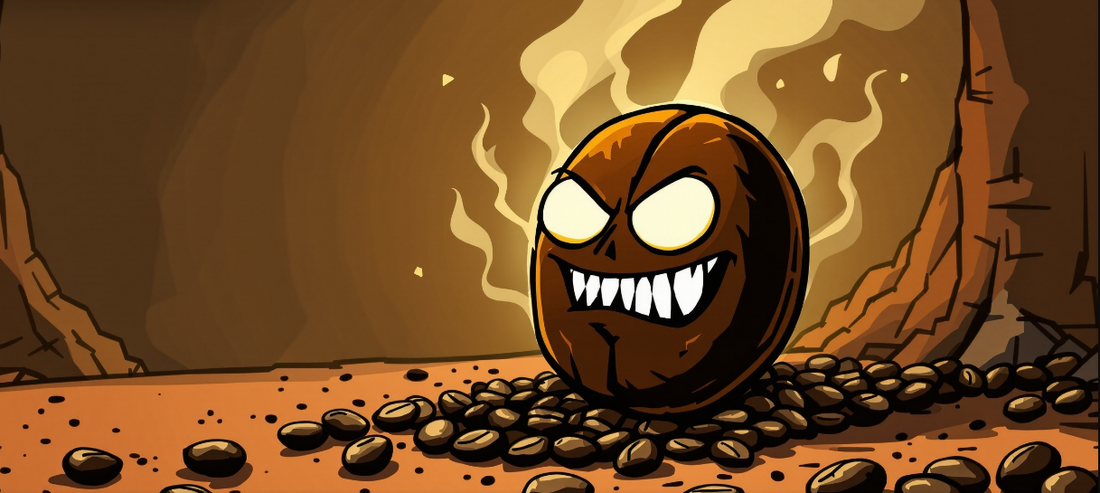
The Dark Side of the Roast: When Your Coffee Goes Full Goth
Alright, coffee connoisseurs and caffeine addicts! Let's pull back the curtain on something many of us have encountered: the dark roast. It’s often presented as "bold" or "strong," but let’s be honest, sometimes it tastes suspiciously like someone set fire to a perfectly good bean. So, what really happens when coffee goes full goth in the roaster?
Imagine a beautiful, fresh green coffee bean. It's packed with hundreds of delicate compounds – acids, sugars, aromatic oils – all waiting to be transformed into magical flavors. The roasting process is a delicate dance, coaxing these compounds out to play. But with a dark roast, that dance turns into a mosh pit, then a bonfire.
The Maillard Reaction & Caramelization: A Tale of Two Deaths
During roasting, two key reactions occur:
-
Maillard Reaction: This is where amino acids and sugars get together and create those delicious, complex savory and sweet notes we love (think toast, roasted meat, or freshly baked bread).
-
Caramelization: Sugars break down and create rich, sweet, sometimes bitter notes like caramel, toffee, and chocolate.
In a well-executed light or medium roast, these reactions build complexity and highlight the bean's origin flavors. But as the roast gets darker, a few things start to go wrong:
1. The Origin & Process Story Gets Burned Away
Those unique characteristics from how the coffee was processed – the vibrant fruitiness of a Costa Rican natural, the clean sweetness of a full washed, or the complex funk of an anaerobic – they're the first casualties. As the beans darken, their internal structure breaks down, and the delicate volatile compounds that give them their distinctive flavor evaporate or are simply incinerated. By the time you get a truly dark roast, most specialty beans, regardless of their meticulous processing, will taste remarkably similar: roasty, smoky, and often bitter. It’s like buying a famous painting just to set it on fire.
2. Bitter is the New Black (and not in a good way)
As the roast progresses into darker territory, the natural sugars continue to break down, eventually carbonizing. This process creates increasingly bitter compounds. Think of burnt toast or over-caramelized sugar – that acrid, harsh bitterness becomes dominant. The sweet, complex caramelization that defines a good medium roast is long gone, replaced by a darker, more aggressive flavor profile.
3. Oil Slick: The Surface Tells All
Ever seen really dark roasted beans glistening with oil? That’s not a good sign. As the bean structure degrades under intense heat, the oils trapped inside are forced to the surface. This not only indicates a very dark roast, but those oils, once exposed to air, will oxidize quickly, leading to rancid flavors and a faster staling process for your coffee. It’s like the beans are sweating out their despair.
When Dark Isn't Just Dark
So, is all dark roast bad? Not necessarily. A well-executed dark roast from a skilled roaster can still have some enjoyable characteristics, like deep chocolate notes or a heavy body, especially if the bean itself can stand up to the heat. However, often, dark roasting is used to mask imperfections in lower-quality beans, or simply caters to a preference for "stronger" (read: more bitter) flavors.
The real magic of specialty coffee lies in celebrating the bean's inherent qualities. When it goes too dark, you're essentially stripping away its identity and replacing it with the roaster's heavy hand.
Call to Action: Curious to taste the difference between carefully roasted levels? Explore our selection of specialty coffees, from bright mediums to carefully crafted dark roasts, and find your perfect cup!
